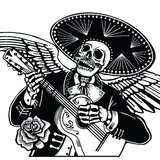- Forum
- Photography and Camera Forum
- Camera Manufacturers - by Brand
- Nikon Camera Forum
- Symbol on my camera, what is it?
Symbol on my camera, what is it?
-
 Topic Author
Topic Author
- E Rodriguez
- Has the Hang of it
-
- Nikon D750
- Followers: 54
- Posts: 100
-
Points:
2015
Post #649845
-

- Screamin Scott
- Moderator
-
- Nikon D610, Nikon D7100, Nikon D300, Olympus OMD E-M5 MarkII, Olympus OM-D E-M10, Olympus Pen E-P3 + film SLR's
- Followers: 1384
- Posts: 6855
-
Points:
39981
Post #649846
-

- Nikon Shooter
- Oh Wise One
-
- 3S 3X 810 850
- Followers: 197
- Posts: 13795
-
Points:
88932
Post #649852
Light is free… capturing it is not!
-
 Topic Author
Topic Author
- E Rodriguez
- Has the Hang of it
-
- Nikon D750
- Followers: 54
- Posts: 100
-
Points:
2015
-

- Screamin Scott
- Moderator
-
- Nikon D610, Nikon D7100, Nikon D300, Olympus OMD E-M5 MarkII, Olympus OM-D E-M10, Olympus Pen E-P3 + film SLR's
- Followers: 1384
- Posts: 6855
-
Points:
39981
Post #649865
-
 Topic Author
Topic Author
- E Rodriguez
- Has the Hang of it
-
- Nikon D750
- Followers: 54
- Posts: 100
-
Points:
2015
Post #649897
Screamin Scott wrote: By that statement, you are demonstrating how little you know about macro. When DOF in macro may only be a matter of millimeters, precise focus is essential.
Yep, that's why I posted the question. I don't know much about photography in whole. I'm working on learning, but find there is a lot to take in. So one foot at a time.
What I don't understand, if you are speaking of precision. How is this seemingly random placed symbol going to contribute to precision?
Thank you for taking the time to help me understand this.
-

- Nikon Shooter
- Oh Wise One
-
- 3S 3X 810 850
- Followers: 197
- Posts: 13795
-
Points:
88932
Post #649899
E Rodriguez wrote: How is this seemingly random placed symbol going to contribute to precision?
Meant in the days to localise the film plane. it means now to
show the position of the sensor sensible plane.
Crucial and critical information when it come to evaluate real-
tive DoF given the focusing distance and the chosen aperture.
Light is free… capturing it is not!
-

- Screamin Scott
- Moderator
-
- Nikon D610, Nikon D7100, Nikon D300, Olympus OMD E-M5 MarkII, Olympus OM-D E-M10, Olympus Pen E-P3 + film SLR's
- Followers: 1384
- Posts: 6855
-
Points:
39981
Post #649900
-

- garyrhook
- Oh Wise One
-
- Nikon D850, Nikon D750, Panasonic G7K
- Followers: 912
- Posts: 11103
-
Points:
67681
Post #649955
Why? There is a school of thought that says this is critical for accurately creating panoramas from multiple shots.
-

- garyrhook
- Oh Wise One
-
- Nikon D850, Nikon D750, Panasonic G7K
- Followers: 912
- Posts: 11103
-
Points:
67681
Post #649960
Screamin Scott wrote: One would measure the distance from that mark to their subject. Using a depth of field calculator to determine the depth of focus so that the subject is within that area...
If one is close to one's subject, isn't the DoF so small (even at f/14 or tighter) that the computation doesn't really matter? And if one is reasonably far away (3-5 feet, say) that accuracy becomes less critical?
Given that you take lots of photos of tiny critters, would you mind elaborating a bit on methodology? I'd appreciate having a better understanding.
-

- Nikon Shooter
- Oh Wise One
-
- 3S 3X 810 850
- Followers: 197
- Posts: 13795
-
Points:
88932
Post #649991
garyrhook wrote: to position the sensor directly over the axis of rotation.
Surprising statement!
The only thing I consider with panorama is that
the lens nodal point IS at the axis of rotation; the
sensor has nothing to do with it!
Light is free… capturing it is not!
-

- garyrhook
- Oh Wise One
-
- Nikon D850, Nikon D750, Panasonic G7K
- Followers: 912
- Posts: 11103
-
Points:
67681
Post #650013
Nikon Shooter wrote: The only thing I consider with panorama is that
the lens nodal point IS at the axis of rotation; the sensor has nothing to do with it!
I was mistaken. Not caring one whit about "perfect" panoramas, I've not bothered to learn about them, and I should have done my research before posting.
Ah, well. I readily admit to being incorrect when facts are presented, or at least googled.
At least one site I found discusses the "entry pupil" as the rotation point for the camera, but wants $13 for a book. Others point out that the nodal point changes from lens to lens. Lots of interesting information out there.
I'd fix the post above if I could.
-

- Nikon Shooter
- Oh Wise One
-
- 3S 3X 810 850
- Followers: 197
- Posts: 13795
-
Points:
88932
Post #650014
not always easy to spot. I suggest my students to mark their
located points for future reference.
Correct again, the non editing feature in a thread is a real pain
in the ass.
Light is free… capturing it is not!
-

- Screamin Scott
- Moderator
-
- Nikon D610, Nikon D7100, Nikon D300, Olympus OMD E-M5 MarkII, Olympus OM-D E-M10, Olympus Pen E-P3 + film SLR's
- Followers: 1384
- Posts: 6855
-
Points:
39981
Post #650015
-

- Screamin Scott
- Moderator
-
- Nikon D610, Nikon D7100, Nikon D300, Olympus OMD E-M5 MarkII, Olympus OM-D E-M10, Olympus Pen E-P3 + film SLR's
- Followers: 1384
- Posts: 6855
-
Points:
39981
Post #650016
- Forum
- Photography and Camera Forum
- Camera Manufacturers - by Brand
- Nikon Camera Forum
- Symbol on my camera, what is it?
Latest Reviews
The Canon EOS R100 is an entry-level mirrorless camera introduced in 2023. But just because it’s an entry-level camera doesn’t mean it’s a bare-bones camera. Find out why in this review!
Nikon’s retro-looking Nikon Zfc is anything but retro. Under its classic body is a host of features and amenities that make it a worthwhile compact mirrorless camera for 2024.
The Canon EOS R50 is one of the newest R-system cameras from Canon. Is it worth your money? Find out all the details you need to know in this comprehensive review.
The Sony FE 70-200mm f/2.8 GM OSS II is Sony’s flagship mirrorless zoom lens. As such, it’s loaded with features and has a top-shelf build quality that makes it a top pick!
Latest Articles
Creating impactful photos of landscapes depends on many factors, not the least of which is your talent behind the lens. This guide explores other elements required for the best product.
The Canon EOS R100 is an entry-level mirrorless camera introduced in 2023. But just because it’s an entry-level camera doesn’t mean it’s a bare-bones camera. Find out why in this review!
Are you ready to upgrade your camera? Before buying new, you might consider the value of purchasing used gear to save money.
The Olympus OM-D E-M10 Mark IV is a micro four thirds camera released in 2020. It’s an entry-level system along with the OM-D E-M5 Mark III. Use this guide to determine which one is best for you!
Blue hour photography might not be as well known as golden hour photography, but it is every bit as good a time to create epic images of landscapes. Learn how in this quick tutorial!
Nikon’s retro-looking Nikon Zfc is anything but retro. Under its classic body is a host of features and amenities that make it a worthwhile compact mirrorless camera for 2024.
Moving from taking snapshots of your dog to creating beautiful images doesn’t have to be that difficult! Use the tips outlined in this dog photography guide, and you’ll get better results in no time.
Acrylic print photos are a beautiful way to display your favorite images. But they don’t come without some questions. Get all the answers you need about this medium in this guide!
















